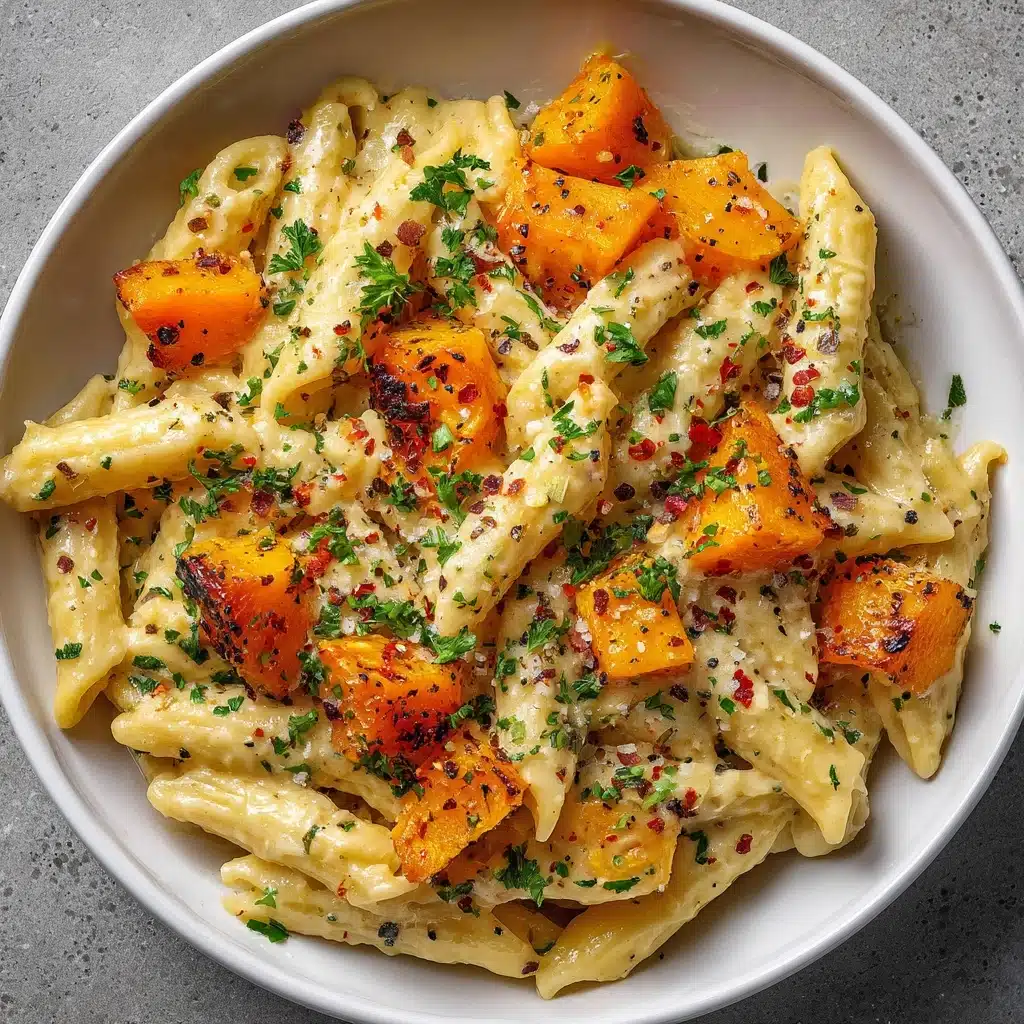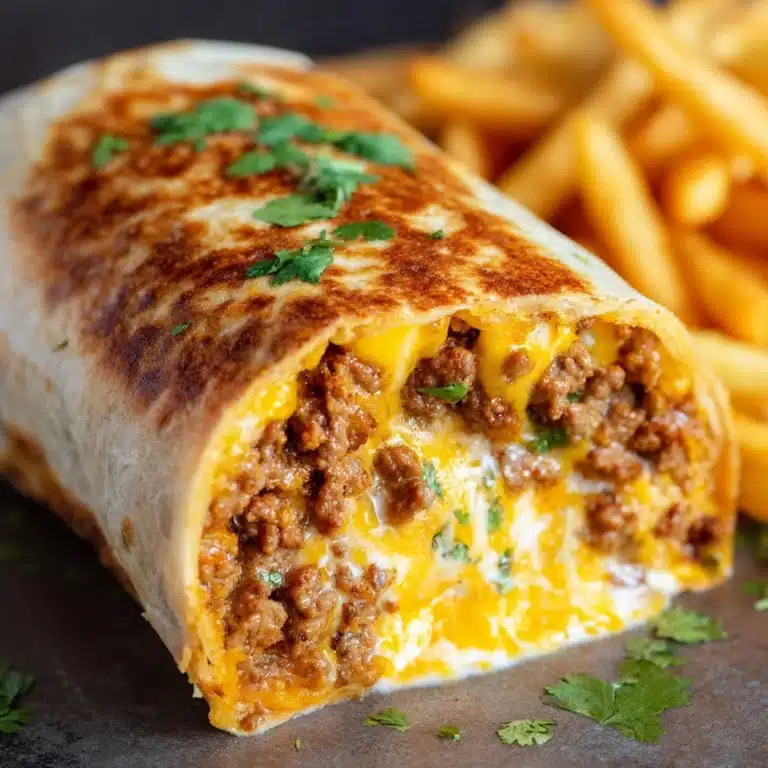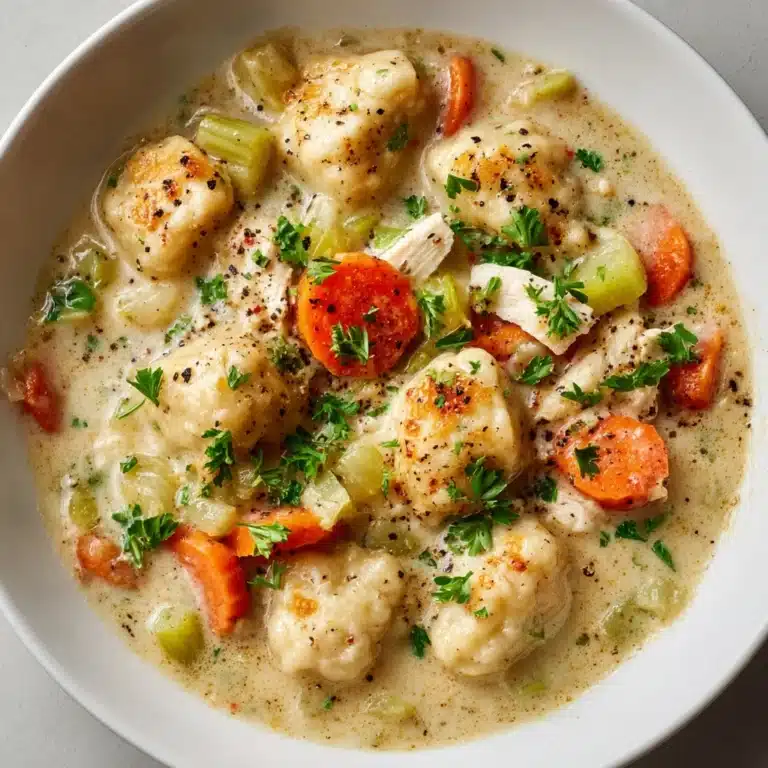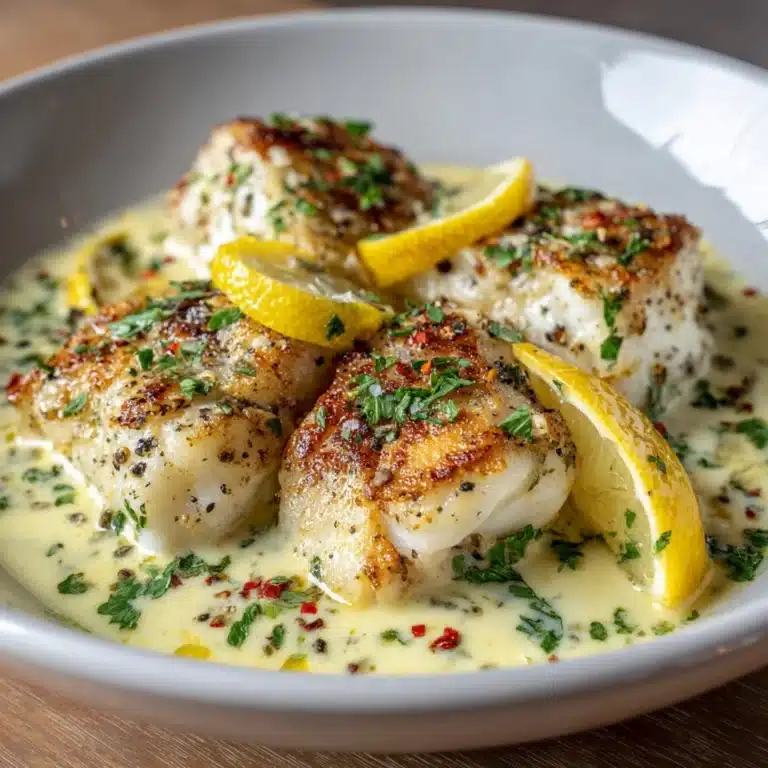If you’re searching for a cozy dish that embodies all the best flavors of fall, look no further than butternut squash pasta. Creamy, vibrant, and incredibly comforting, this pasta showcases tender butternut squash blended into a silky sauce that coats every noodle. Each bite delivers a little bit of sweet earthiness, a hint of nutmeg, and that luscious, cheesy finish—all harmonizing into a meal that feels both elegant and effortless. There’s simply nothing like gathering around the table with a bowl of butternut squash pasta when the weather starts to turn crisp!
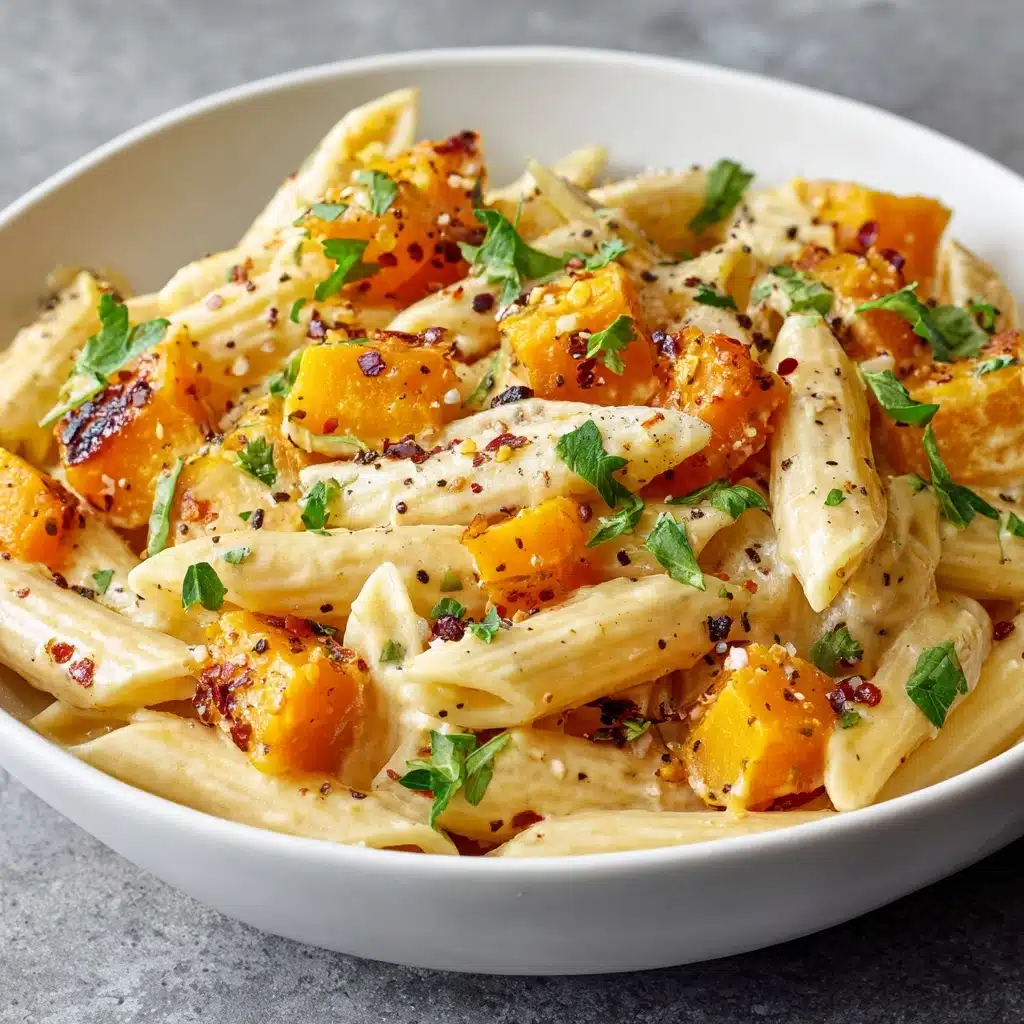
Ingredients You’ll Need
This recipe keeps things simple, yet every ingredient plays a starring role in building flavor, color, and velvety texture. Gather these essentials, and you’ll be amazed at how easily they transform into your new cold-weather favorite.
- Pasta (12 oz, such as penne or fettuccine): The perfect canvas for your creamy sauce—choose a variety that holds sauce well.
- Olive Oil (2 tbsp): Adds richness and helps soften the onions and squash as they cook.
- Butternut Squash (3 cups, cubed): The sweet, nutty star that creates both flavor and color in this dish.
- Onion (1 small, chopped): Provides a mild, savory backbone, balancing the sweetness of the squash.
- Garlic (3 cloves, minced): Infuses the sauce with aromatic depth—don’t skip it!
- Vegetable or Chicken Broth (1 cup): Adds moisture and a hint of savory complexity.
- Heavy Cream (½ cup): Brings the velvety finish that makes this sauce so satisfying.
- Parmesan Cheese (½ cup, grated): Adds cheesy, salty umami—stir some in and sprinkle a bit extra on top!
- Ground Nutmeg (½ tsp): Lends classic warmth and a subtle, aromatic note.
- Red Pepper Flakes (½ tsp, optional): For a touch of heat, if you like a little kick.
- Salt and Black Pepper (to taste): Essential for dialing in just the right flavor balance.
- Unsalted Butter (2 tbsp): A final swirl of richness in the sauce that brings everything together.
- Chopped Fresh Sage or Parsley (2 tbsp, for garnish): Bright herbs provide freshness and tempting color in every bite.
How to Make Butternut Squash Pasta
Step 1: Cook the Pasta
Start by bringing a large pot of salted water to a boil. Cook your pasta of choice according to the package directions until it’s al dente—tender but still with a bit of chew. Remember to scoop out about ½ cup of the pasta water before draining. This starchy water becomes your secret weapon for achieving a saucy, glossy finish later. Set the cooked pasta aside while you move on to the sauce.
Step 2: Sauté Squash and Aromatics
In a large skillet, heat the olive oil over medium heat. Toss in the cubed butternut squash and chopped onion, and sauté for about 8 to 10 minutes until everything is softening up and beginning to caramelize slightly at the edges. Stir in the minced garlic and cook for one minute more. The fragrance will instantly tell you something magical is on its way!
Step 3: Simmer Until Tender
Pour the vegetable or chicken broth into the skillet with the squash mixture. Cover and let it simmer gently for about 10 minutes. By the end, your squash should be fork-tender and bathed in savory juices—this is when the flavors really come together.
Step 4: Blend the Sauce
Carefully transfer the warm squash mixture to a blender, or use an immersion blender right in the skillet if you prefer less fuss. Blend until completely smooth and creamy. This golden sauce should look temptingly silky and thick, which means you’re on the right track!
Step 5: Finish the Sauce
Pour the squash purée back into your skillet. Stir in the heavy cream, Parmesan cheese, nutmeg, red pepper flakes (if using), and butter. Let everything melt together over low heat, whisking or stirring gently. Taste and adjust with salt and black pepper. If the sauce’s consistency is a little too thick, simply add a splash of your reserved pasta water until it’s perfect.
Step 6: Toss and Serve
Add the cooked pasta directly into the sauce and toss until every strand or shape is luxuriously coated. Again, use a bit more pasta water as needed to loosen everything up. Just before serving, sprinkle the whole dish with fresh sage or parsley. You’ve got a restaurant-worthy bowl of butternut squash pasta ready for the table!
How to Serve Butternut Squash Pasta

Garnishes
A generous sprinkle of grated Parmesan and a scatter of freshly chopped sage or parsley will take your butternut squash pasta from delightful to absolutely irresistible. The herbs bring brightness and the cheese adds a final flourish of umami and richness. For special occasions, you could even add a handful of toasted pine nuts or a drizzle of balsamic glaze for extra flair.
Side Dishes
Since butternut squash pasta is creamy and full of flavor, I love to pair it with something crisp and refreshing like an arugula salad, perhaps tossed with lemon and a sprinkle of walnuts. Garlic bread or a crusty baguette is always welcome, just perfect for scooping up any of that extra sauce. Lightly roasted vegetables, like Brussels sprouts or asparagus, also work beautifully here.
Creative Ways to Present
Butternut squash pasta is just as lovely for a casual weeknight as it is for entertaining. For a dinner party, try plating the pasta individually with a little well of sauce in the center, topped with microgreens and a shower of Parmesan. You can also turn it into a baked pasta by topping with cheese and broiling for a bubbly, golden crust. Hosting brunch? Serve the pasta in small bowls or as a filling for lasagna roll-ups. The possibilities are endless.
Make Ahead and Storage
Storing Leftovers
If you find yourself with leftover butternut squash pasta (lucky you!), allow it to cool to room temperature before transferring to an airtight container. Properly stored in the refrigerator, the pasta will remain fresh and creamy for up to three days. Stir in a splash of milk or cream when reheating to revive the sauce.
Freezing
Butternut squash pasta sauce itself freezes beautifully. Cool the sauce before transferring to a freezer-safe container, leaving a bit of room for expansion. Freeze for up to two months. While the texture of the sauce may change slightly after thawing, a vigorous stir and a touch more cream will quickly bring it back to life. Cook your pasta fresh when you’re ready to serve for the best experience.
Reheating
To reheat, warm the pasta gently in a skillet over low heat with a splash of cream, milk, or broth to loosen the sauce. Stir often to prevent sticking, and heat until just warmed through. Microwave reheating works too—cover the pasta and stop every 30 seconds to gently stir and check for even heating.
FAQs
Can I make butternut squash pasta vegan?
Absolutely! Substitute the heavy cream with coconut cream or an unsweetened dairy-free creamer, and use your favorite plant-based parmesan alternative. Swap in vegan butter, and you’ll have a dairy-free, vegan butternut squash pasta that still tastes wonderfully rich.
What type Main Course
Short, tube-shaped pastas like penne, rigatoni, or ziti do a fantastic job catching the sauce, but classic long noodles like fettuccine or tagliatelle are also delicious options. The key is to use a pasta that can really soak up and cradle all that creamy butternut goodness!
Can I roast the squash instead of sautéing it?
Definitely! Roasting the butternut squash before blending brings out even deeper sweetness and a hint of caramelized flavor. Simply toss cubes with olive oil, roast at 400°F until tender and lightly browned, then follow the blending step as usual.
Do I have to use heavy cream?
While heavy cream gives classic richness to the butternut squash pasta sauce, you can lighten things up with half-and-half, whole milk, or even a good unsweetened oat or cashew milk. Adjust to your preference—the sauce will still turn out dreamy!
Can I add protein to this dish?
Absolutely! Crispy pancetta or bacon adds a salty, savory crunch, or try tossing in sautéed mushrooms, cooked chicken, shrimp, or roasted chickpeas for a protein-packed twist. It’s a flexible recipe, so make it your own.
Final Thoughts
Don’t wait for a special occasion—treat yourself and loved ones to this irresistibly creamy butternut squash pasta soon. Each spoonful is pure comfort, and I have a feeling it will become a new favorite at your table. Enjoy every golden, flavor-packed bite!
Print
Butternut Squash Pasta Recipe
- Total Time: 40 minutes
- Yield: 4 servings 1x
- Diet: Non-Vegetarian
Description
Indulge in the creamy and comforting flavors of this Butternut Squash Pasta, a perfect dish for the fall season. Velvety butternut squash sauce coats al dente pasta, creating a satisfying and flavorful meal that’s sure to become a favorite in your recipe rotation.
Ingredients
Pasta:
- 12 oz pasta, such as penne or fettuccine
Sauce:
- 2 tbsp olive oil
- 3 cups cubed butternut squash
- 1 small onion, chopped
- 3 cloves garlic, minced
- 1 cup vegetable or chicken broth
- ½ cup heavy cream
- ½ cup grated Parmesan cheese
- ½ tsp ground nutmeg
- ½ tsp red pepper flakes (optional)
- Salt and black pepper to taste
- 2 tbsp unsalted butter
- 2 tbsp chopped fresh sage or parsley for garnish
Instructions
- Cook the pasta: Cook pasta according to package directions until al dente; drain and reserve ½ cup pasta water.
- Sauté the squash: In a large skillet, heat olive oil over medium heat. Add butternut squash and onion and sauté for 8–10 minutes until softened. Add garlic and cook another minute.
- Make the sauce: Pour in broth, cover, and simmer 10 minutes until squash is tender. Transfer squash mixture to a blender or use an immersion blender to puree until smooth. Return sauce to the skillet, stir in heavy cream, Parmesan cheese, nutmeg, red pepper flakes if using, and butter.
- Combine and garnish: Toss cooked pasta in the sauce, adding reserved pasta water as needed to reach desired consistency. Season with salt and black pepper. Garnish with fresh sage or parsley before serving.
Notes
- Roast the butternut squash before blending for a deeper, caramelized flavor.
- Use gluten-free pasta if desired.
- Add crispy pancetta or bacon for a savory twist.
- Prep Time: 15 minutes
- Cook Time: 25 minutes
- Category: Main Course
- Method: Stovetop
- Cuisine: Italian-Inspired
Nutrition
- Serving Size: 1 portion
- Calories: 420
- Sugar: 6 g
- Sodium: 310 mg
- Fat: 18 g
- Saturated Fat: 8 g
- Unsaturated Fat: 9 g
- Trans Fat: 0 g
- Carbohydrates: 54 g
- Fiber: 4 g
- Protein: 12 g
- Cholesterol: 40 mg
